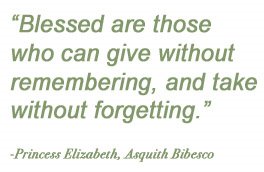Summer Brings a Wave of Homeless Families

Rob Bennett for The New York Times
The Maldonado family had been living without gas, electricity or hot water, but did not move out until the school year ended.By JULIE BOSMAN
Published: July 6, 2009
As the school year sailed to a close last month, Arielle Figueras crossed the stage in her cap and gown and proudly accepted her fifth-grade diploma.
The next day, she was homeless.
Arielle, a petite 11-year-old, and her parents, brother and sister packed their belongings and arrived at the intake center for homeless families in the South Bronx. Though they had been fighting with their landlord for months and their gas and electricity had long been shut off, they refused to leave their apartment while school was in session.
“She was graduating, so we had to wait,” Arielle’s mother, Marilyn Maldonado, said. “We just didn’t want to disrupt their routines. We couldn’t do that to them.”
Many New Yorkers view summer as a time for vacations, camp and lazy days at the beach. But city officials have been preparing for quite a different summer ritual: the swelling of the population of homeless families.
They call it the summer surge, and say that this year could be the worst yet.
Because the homeless population this spring was up more than 20 percent over last spring, possibly because of higher unemployment, officials are girding for an all-time high in the number of families in shelters at once, expecting close to 10,000. Already, the number has reached 9,420.
Other cities are noticing a similar trend. In Toledo, Ohio, one overcrowded shelter has been turning away dozens of people each night. In Charlotte, N.C., a shelter that is typically open only in winter has stayed open for the summer to meet demand, which is 20 percent higher than last summer. Across town, a Salvation Army shelter is so full, it has set up mats on the floors.
The reasons are varied but simple. Landlords who are reluctant to evict during winter are less hesitant when it is warmer. Parents like the Maldonados, who have endured poor housing conditions to spare their children agitation and humiliation at school, finally pack up and leave. And relatives who have taken in families in cramped apartments lose patience when children are suddenly underfoot all day long.
“When school’s open, families tend to stay where they are,” said Deronda Metz, the director of social services for the Salvation Army in Charlotte. “And when school’s out, they’re told it’s time to go.”
In New York, the number of homeless families applying for shelter in the summer has been 28 percent higher than the rest of the year the last three years. Their first stop is the intake center, a 24-hour, sprawling 66,000-square-foot brick building in the Bronx. They must walk through metal detectors, must submit to questioning from social workers and, after hours of waiting for their names to be called, are bused to a temporary hotel room or apartment.
Workers have begun to make room for the hundreds of extra families that are expected at the center this summer. On the second floor, all of the cubicles in one room were dismantled, replaced by rows of plastic chairs to make a waiting room for up to 114 people. Rows of boxy light gray metal lockers — each large enough to hold several suitcases — were installed. Employees at the intake center are being limited to one week of vacation during July and August.
Just a few hours after the public schools let out for summer, families began trickling into the center, their faces tight with stress. One woman walked briskly inside with her young son, who wore a bright blue backpack and held an armful of books. Another woman, who would not give her name, waited outside with her daughter, who had just finished second grade. “My sister said we couldn’t stay with her anymore,” she said, fanning herself for some relief from the humidity. “I said once she’s done with school, we’d get out.”
Arielle’s father, Douglas Maldonado, said that their landlord had stopped making repairs and had altered the building’s electric billing to make the Maldonados pay for other apartments’ power, up to $8,000 a month. But they held onto their apartment just long enough for Arielle’s graduation and for their son, Sabino Figueras, to graduate from eighth grade the week before.
The Bloomberg administration has run into trouble before with its handling of the summer influx of homeless families. In 2002, there was a public relations debacle when officials allowed hundreds of parents and children to wait in the intake office each day, more than three times the number that city fire codes allowed. Other families were placed in an empty men’s jail in the Bronx that was later discovered to have been contaminated with lead paint.
This summer, the administration will use a combination of existing homeless shelters that are not quite full and vacant apartment buildings that have been fixed up for homeless families, said Robert V. Hess, the commissioner of homeless services.
“We have a variety of options, so that we can be as nimble as possible,” Mr. Hess said. “We keep some reserve.”
One essential part of the city’s plan is to place families in hotels temporarily, some of which are used for both homeless people and paying customers.
Mr. Maldonado’s family spent its first few nights in a hotel on 145th Street in the Bronx. One of the mattresses in the room, Mr. Maldonado said, was filthy and stained with urine.
On June 28, Tarshima Dixon, a mother of four, went to the intake center with her 14-year-old son, Jason. Two more sons, Craig Dixon, 13, and Nahjee Johnson, 8, waited outside with their grandmother and cheerfully bounced a basketball on the sidewalk as Michael Jackson’s “Billie Jean” played from their minivan’s stereo.
The family was evicted in April, and Ms. Dixon’s mother did not have room for all of them. So Ms. Dixon, along with Craig, Nahjee and another son, Gregory, 16, moved into a shelter in Brooklyn soon after. Jason had been living with his father in Camden, N.J., but Ms. Dixon wanted him back with his brothers. They had to come to the intake center to let the city know there would be one more homeless person needing a bed.
“He just finished school this week,” said Ms. Dixon, who added that she was determined that the whole family would move into an apartment by August. “I wasn’t going to bring him here until he was done.”




